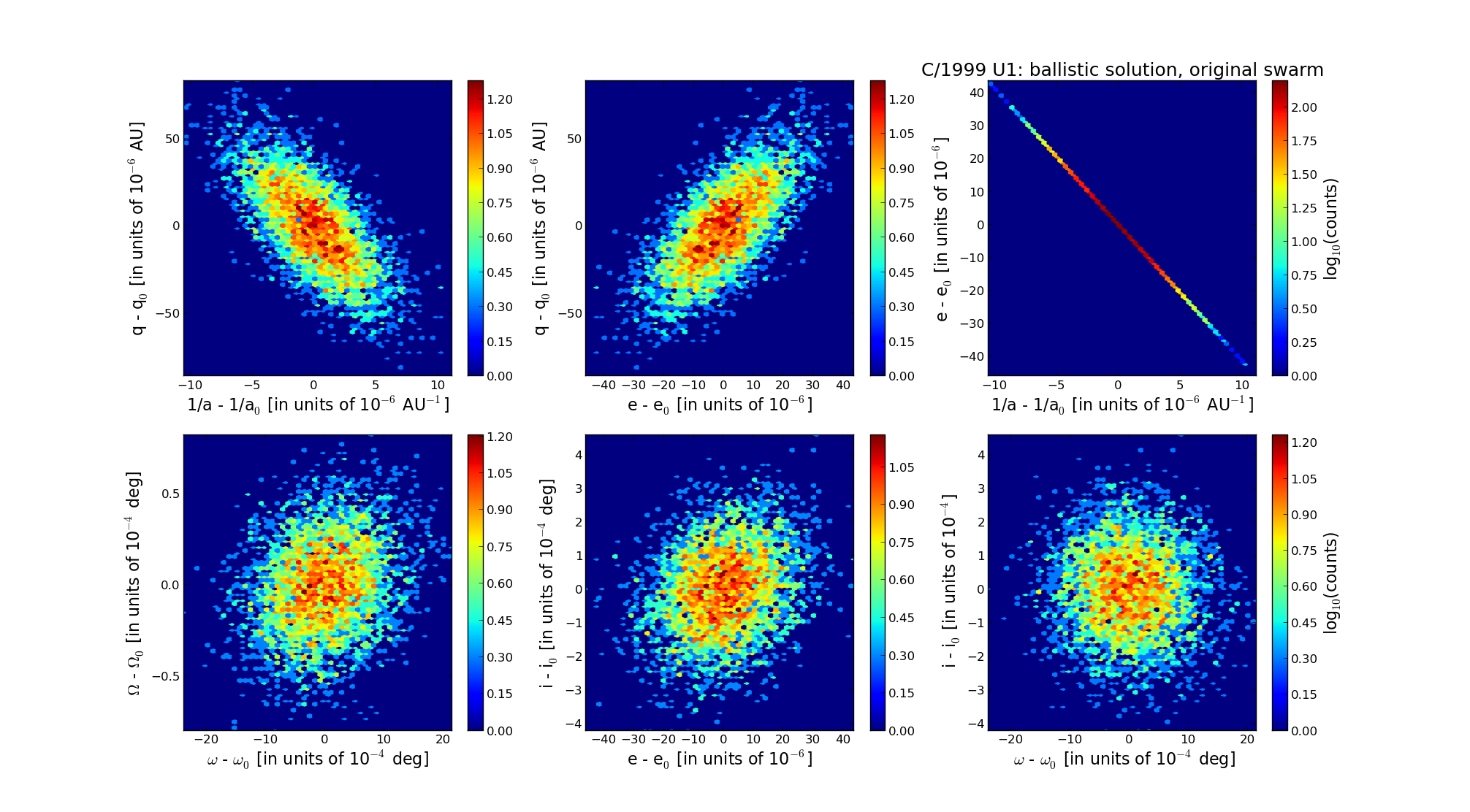| Solar System Dynamics & Planetology Group |
 |
C/1999 U1 Ferris |  |
| Solar System Dynamics & Planetology Group |
 |
C/1999 U1 Ferris |  |
| number of observations | 208 |
| number of residuals | 410 |
| data interval | 1998 Dec. 22 — 2000 Jan. 28 |
| rms [arcsec] | 0.51 |
| orbit quality class | 1a |
| Epoch (TT) | 19980815.0 | = JD 2451040.5 |
| time of perihelion passage (TT) | 19980903.028007 | ± 0.003494 |
| perihelion distance | 4.13756580 | ± 0.00002406 |
| eccentricity | 1.00365011 | ± 0.00001242 |
| argument of perihelion [deg] | 291.063317 | ± 0.000628 |
| longitude of the ascending node [deg] | 58.257256 | ± 0.000024 |
| inclination [deg] | 105.734810 | ± 0.000121 |
| inverse semimajor axis [10-6 au-1] | -882.19 | ± 2.99 |

| Epoch (TT) | 16940808 | |
| time of perihelion passage (TT) | 19980903.427579 | ± 0.003547 |
| perihelion distance | 4.13652185 | ± 0.00002415 |
| eccentricity | 0.99984302 | ± 0.00001239 |
| argument of perihelion [deg] | 291.151039 | ± 0.000628 |
| longitude of the ascending node [deg] | 58.213827 | ± 0.000024 |
| inclination [deg] | 105.825193 | ± 0.000122 |
| inverse semimajor axis [10-6 au-1] | 37.95 | ± 3.00 |
| Epoch (TT) | 23081009 | |
| time of perihelion passage (TT) | 19980903.430110 | ± 0.003442 |
| perihelion distance | 4.12996080 | ± 0.00002416 |
| eccentricity | 0.99777930 | ± 0.00001238 |
| argument of perihelion [deg] | 290.958233 | ± 0.000631 |
| longitude of the ascending node [deg] | 58.287371 | ± 0.000024 |
| inclination [deg] | 105.882515 | ± 0.000122 |
| inverse semimajor axis [10-6 au-1] | 537.70 | ± 3.00 |